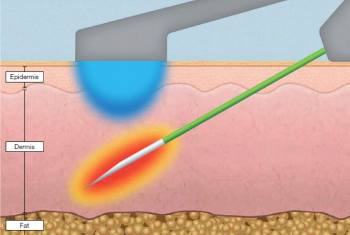
ONE TO WATCH: Novan now plans to initiate two pivotal Phase 3 trials with SB204 once daily in the first quarter of 2016, targeting enrollment of 1,300 subjects per trial.
Oral and topical antibiotics, including clindamycin, have been a mainstay for treating acne, but long-term use is contributing to the development of antimicrobial-resistant bacteria. Nitric oxide has been shown to exhibit broad antimicrobial activity and to promote vasodilation, regulate inflammation, stimulate tissue repair, and eradicate cancer cells. Novan’s patented Nitricil™ technology overcomes the previous delivery issues with nitric oxide by stably storing the gaseous species as a solid that can be transformed into targeted therapeutics.
The new Phase 2b study demonstrated statistically significant reductions in the percent change of non-inflammatory (white heads and black heads) and inflammatory (larger red bumps and pustules) lesions at Week 12 with all doses of SB204 compared to Vehicle.
SB204 demonstrated excellent cutaneous tolerability with no treatment-related serious adverse events in more than 400 dosed subjects to date. Across the entire Phase 2 development program, less than 1% of enrolled subjects treated with active or Vehicle were discontinued due to local application-site adverse events.
Novan now plans to initiate two pivotal Phase 3 trials with SB204 once daily in the first quarter of 2016, targeting enrollment of 1,300 subjects per trial.
In the Phase 2 study conducted across 20 sites in the United States, 213 subjects were randomized to five treatment arms: SB204 2% twice daily, SB204 4% once daily, SB204 4% twice daily, and Vehicle once or twice daily and treated for up to 12 weeks. Data from Vehicle-treated subjects were pooled for analysis.
All doses of SB204 showed statistically significant reductions in the percent change of non-inflammatory and inflammatory lesions compared to Vehicle at the 12-week endpoint (intent-to-treat population), the study showed. At the end of treatment, the only dose group to be statistically significant in both absolute change and percent change for both lesion types was the SB204 4% once daily treatment arm. The absolute change from baseline in inflammatory lesions was -11.3 (42%) for 4% once daily and -5.8 (19%) for Vehicle (p=0.004), and the absolute change from baseline in non-inflammatory lesions was -14.1 (37%) for 4% once daily and -7.6 (17%) for Vehicle (p=0.032).
In a time-to-event analysis, the 4% once daily treatment demonstrated a time-to-median improvement of 4.1 weeks compared to 11.6 weeks for Vehicle (p=0.014 as defined by a 35% reduction in inflammatory lesions). A 6% difference between the pooled SB204-treated subjects and Vehicle-treated subjects was observed in the Investigator Global Assessment (IGA) endpoint. While not statistically significant, this difference in IGA enables the power calculations for future Phase 3 pivotal studies with a 95% confidence interval.
At the end of 12 weeks of treatment, <5% of the subjects had a cutaneous tolerability score of “moderate” for any of the local tolerability assessments (erythema, dryness, scaling, itching, burning/stinging), with zero reported subjects having any severe local application-site reactions.
In Novan’s first Phase 2, double-blind, Vehicle-controlled, parallel-group, 3-arm study conducted at four sites in Latin America, 153 subjects were randomized to twice daily treatment with SB204 1%, SB204 4%, or Vehicle in a 1:1:1 ratio and treated for 12 weeks. At 4 weeks, the 4% dose of SB204 demonstrated a statistically significant reduction in both non-inflammatory and inflammatory lesions compared to Vehicle (p ? 0.05, intent-to-treat population). Statistically significant reductions were observed in the primary and secondary endpoints for both lesion types at the 12-week time point.
The absolute change from baseline in inflammatory lesions was -15.5 (54%) for 4% twice daily and -9.3 (35%) for Vehicle (p=0.018), and the absolute change from baseline in non-inflammatory lesions was -11 (26%) for 4% twice daily and -0.3 (1%) for Vehicle (p=0.031). Clinical reductions in sebum excretion were observed with a mean reduction of approximately 80% in SB204-treated subjects as compared to Vehicle (n=70 subjects, ns). There were no statistically significant differences in the dichotomized IGA scores of “success” (score of “clear/almost clear” and minimum two grade change between baseline and Week 12) between Vehicle and SB204 1% or SB204 4% treatment groups.



